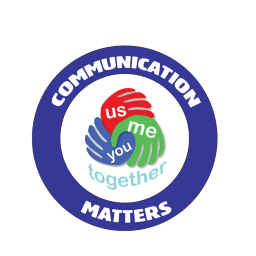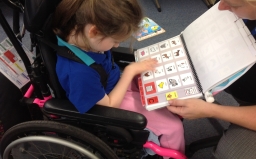 Communication Matters
Communication Matters
At Nambour State Special School we believe AAC is the foundation for developing communication skills (learning language for interaction) and developing language skills (using language for learning):
“Every student has ideas, thoughts, hopes, feelings and interests to express. These expressions are integral to enabling our students to connect with family and friends and become a valued member of society. We support students’ basic human right to understand others and be understood in all environments, as independently as possible.”
In recognition of the research around the importance of modelling robust communication systems, Nambour Special School actively models and teaches PECS, Proloquo2go and PODDS, as appropriate to assessed student communicative needs.

Definition of AAC at Nambour Special School
Augmentative and alternative communication (AAC) includes all forms of communication (other than oral speech) that are used to express thoughts, needs, wants and ideas. We all use AAC when we make facial expressions or gestures, use symbols or pictures or write.
Roles and Responsibilities
Equality of opportunity is evidenced when staff recognise that they too are AAC users within the school environment. This means that:
staff are encouraged to sign
staff are encouraged to use symbols
symbols are visible in all areas of the school
symbols are incoporated into all aspects of the curriculum and not just AAC lessons
AAC has a high status in terms of staff training and sharing expertise



Do's and Don'ts of AAC
Do |
Don’t |
- Do use the AAC system to talk yourself
|
- Don’t expect the AAC user to communicate without you modelling how
|
|
- Don’t demand prerequisite skills
|
- Do use a well-designed comprehensive vocabulary
|
- Don’t provide an AAC system with only a handful of choices
|
- Do provide enough wait time
|
|
- Do ask open ended questions
| - Don’t ask questions that the AAC user already knows the answer to
|
- Do focus on key words when modelling
|
- Don’t think you need to always model grammatically complete sentences
|
- Do respect multi-modal communication
|
- Don’t say and now say it on your talker
|
- Do allow exploration and access to the whole vocabulary
|
- Don’t create custom pages for specific activities
|
- Do make sure AAC is available all day, every day
|
- Don’t limit access to the AAC system
|
- Do describe what you want to say using key words
|
- Don’t focus on adding lots of vocabulary
|
www.assistiveware.com/aac-do-dont